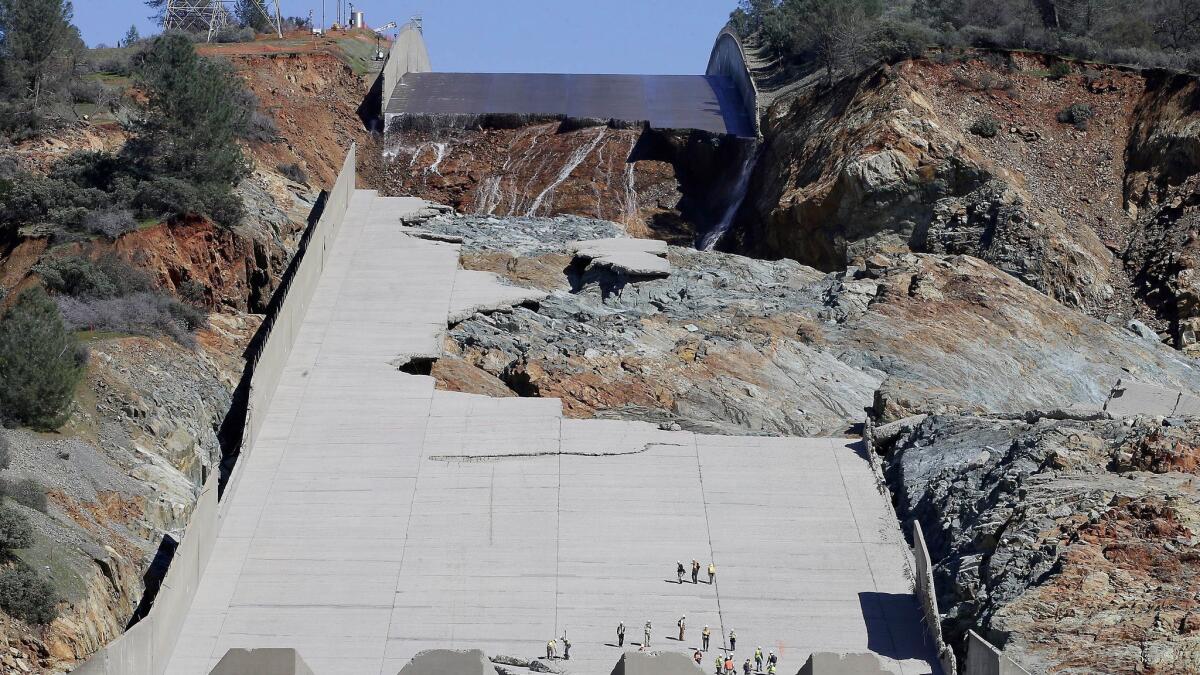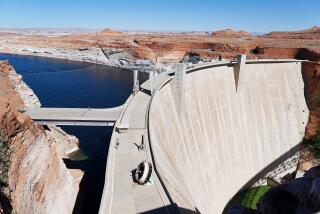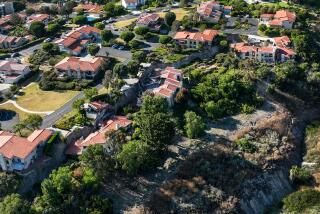Clues to Oroville Dam spillway failure âwere all there in the files,â top investigator says

The clues that the main spillway at the Oroville Dam could fail were embedded deep in state records, but officials did not recognize the evidence before the structure broke apart in February, investigators said Tuesday.
A history of damage when the spillway was used, cracking in the concrete surface and unexpectedly large amounts of water exiting drains under the deck should have raised suspicions that something was wrong. But annual inspections gave the state false confidence that the spillway could handle a big flood event, investigators found.
For the record:
9:43 a.m. Nov. 27, 2024This article identifies the leader of the independent investigation into the failure of the Oroville Dam spillway as John French. The team leaderâs name is John France.
Then, on Feb. 7, when the Department of Water Resources sent 55,000 cubic feet of water per second down the ramp, far short of the design capacity of 300,000 cubic feet per second, it began to crumble.
âPhysical inspections, while necessary, are not sufficient to identify risks and manage safety,â said an interim investigation report made public on Tuesday.
Instead, dam operators should go back to the original design and construction documents to see whether the standards are consistent with todayâs practices, said John French, who leads the independent investigation team.
The main spillway at the Oroville Dam broke apart when underground water pressure lifted a massive section of the concrete floor into the flow of water and caused rapid erosion of the foundation, the interim report found.
The underlying causes included a combination of aging, design flaws and maintenance shortcomings. The report found an inadequate drain system under the spillway, thin sections of concrete and repaired fissures that allowed water to penetrate into the foundation.
But all of those clues didnât add up beforehand.
âWhen you put all those pieces together, there is the possibility we could uplift the slab,â said French, an engineer who spent much of his career at Los Angeles-based AECOM. âThey were all there in the files.â
The Department of Water Resources said late Tuesday that it âagrees with the [independent forensics team] that dam owners need to reassess current procedures as visual inspections would not have caught the February failure. The additional spillway evaluations already underway are the start of that process.â
The agency said the repair efforts at Oroville will bring the dam up to todayâs standards, adding that the lessons are important for every dam across the nation.
The seven-page report, which was released through the Assn. of State Dam Safety Officials and the U.S. Society on Dams, found a wide range of related factors combined to undermine the spillway.
The report noted that the standards for removing loose rock and soil from the foundation of the spillway were relaxed during construction.
The anchors that held the spillway to a mountainside were not strong enough, the report said, and the drains under the spillway were not designed to handle all of the water that penetrated into the foundation.
Other findings included: Crack repairs or new damage allowed more water to penetrate under the spillway; shallow voids developed under the concrete; metal rebar in the concrete corroded; and the concrete deck in the area where the spillway covered drain pipes was only seven inches thick, not the 15 inches that was supposed to be the minimum design thickness.
Also, the uplifting force exceeded the weight of the concrete deck and all of the water that was rushing down the spillway. It also exceeded the anchoring system that tied the deck into the hillside, the report found.
Robert Bea, a UC Berkeley professor emeritus and co-founder of the schoolâs Center for Catastrophic Risk Management, called the independent investigation teamâs effort âa good progress report.â Bea had done his own independent appraisal of the failure and reached some of the same conclusions.
French said the forensics team has largely completed its work examining the physical causes of the failure but is still working on its evaluation of the human and institutional factors that played a role.
A final report is expected later this year.
Twitter: @rvartabedian
UPDATES:
5:55 p.m.: This article was updated with additional details from the report and reaction.
This article was originally published at 1:25 p.m.
More to Read
Sign up for Essential California
The most important California stories and recommendations in your inbox every morning.
You may occasionally receive promotional content from the Los Angeles Times.











